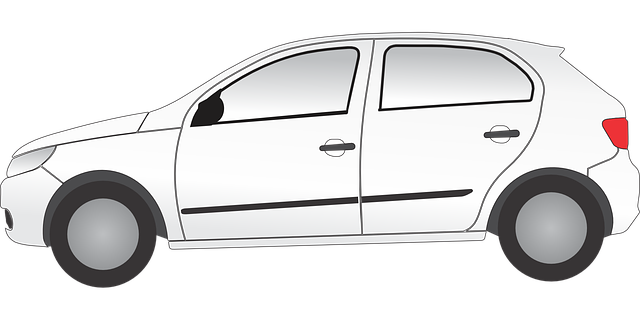Varela spoke with Staff Reporter Vince Bond Jr. during NAMAD’s conference in December about the challenges involved with selling EVs as well as succession planning and how the pandemic has reshaped the retail experience. Here are edited excerpts.
Q: What do you think are the top challenges facing minority dealers?
A: Right now, EVs. Part of it because of the cost to play in that area. Manufacturers have made it real expensive. And it doesn’t matter if you sell one car or you sell 1,000 cars a month. It’s the same $100,000 to $200,000 to do. That’s wrong. They haven’t come up and said, “You know what? The guy who’s selling 10 cars a month obviously cannot see his return on investment as quick as the guy in a metropolitan store that is making a million dollars a month.” He doesn’t care about spending $100,000. What are your secondary-market store guys doing? Electing not to sell it. Manufacturers didn’t say, “We’ll finance you the equipment if you want to do it.”
Do you feel automakers are starting to be more open to more diversity programs since George Floyd’s death?
Yes, you do see a lot of interest. Some are better than other manufacturers. So manufacturers give us a lot of lip service and some money. The commitment is not there for all of them. Part of it might be because they don’t understand what to do. They haven’t been able to hire qualified minorities to guide them through the process. If you go and look at the OEMs and find out what minorities you have at the top levels, there are none.
Don’t forget that minorities are a growing population and going to be the majority sooner or later. Their dealers have to reflect the customer base. They do need a little bit more than just throwing money. When you just give money, you think you’re doing the right thing, but not always. An organization like NAMAD — an event like this with 800 people here, 300-plus dealers here — I don’t even think NADA puts together an event that 300 dealers are sitting in one room at the same time and spending four days together in the same hotel. As a manufacturer, I would have my top people here. Fly down Jim Farley or Mary Barra. You come down here and you mingle with these people for 24 hours.
The minority dealer population is getting older, and succession is important. So what do dealers do if they don’t have a relative interested in the business? Should they find a minority to sell to?
At the end of the day, you’re looking for green. Who is going to give you the most green? And that’s been a challenge because minorities, as much as we want them to sell to other minorities — selling a dealership is difficult. If you can mentor somebody, I think we’d like to be able to do that — mentor somebody that can succeed. If they’re involved in organizations like NAMAD, we can help them find the candidate. And that will help the minority count number continue to go up. In the next few years, a lot of dealers are going to finally say, “You know, I’m going to retire, I don’t have anybody else to do it.” So I want the manufacturers when they get that letter from the dealers — sometimes they pick a little bit with who they want in there. They’re not necessarily picking the minorities, and they should because they do have that opportunity. There’s some good manufacturers. Honda has been good about requiring some of the dealerships to be sold to minorities.
If a metro point comes up for sale, I don’t think I can name you one point that has gone to a minority. They could say, “We’re going to put a minority there who is successful. We’re going to help them finance” — because $20 million is a lot of money — “and then let’s see what happens.” I told them one time that when you develop a new gadget for a vehicle, you might spend $100 million and that gadget never makes it to production. A hundred million dollars will buy you a lot of minority dealers, and they will sell your cars. But their thinking is “we’re just going to give you $5 million and we’re doing our part.” Investing in the minority community in the retail business will pay out.
What advice do you give a young person looking to buy a store?
Be prepared to take care of the customer. Because I think pricing is getting to be somewhat set, there’s the service side of it. You need to be really involved with the technology side, the online sales. So don’t think the old-fashioned way. Get into the new technology and get into the new things. Show manufacturers that you can market cars, even though to me that is becoming less important. They want to control our sales deals a little bit more.
How do you feel about the development of NAMAD NextGen, a group focused on building a pipeline of up-and-coming minority dealer candidates?
I think it is a great, great organization to train the future dealers. Things that maybe I took for granted that I learned 20 years ago on my own, we’re bringing it to the table. They’re really embracing it. Their involvement is good, they’re mature, and they’re growing up. When you have a conversation with some of them about the business today, you feel like, “Wow, they do understand what’s going on.”
You’ve talked about Netflix, and how that model might be coming to autos. Where does that thinking come from?
A few years ago you bought a vehicle that had an XM radio and came with a year’s subscription, maybe two years. Today, six months or less. They share in that revenue with XM. You start looking at some of the navigation systems and you get two years free and after that, if you want you’ll pay for it. These autonomous driving vehicles; Chevrolet has Super Cruise. They’re going to give you that maybe for three years, at the end of three years if you like it and you get used to it and you get hooked on it, you pay.
So they’re slowly going to subscription-based services because prices of the car are out of control. They’ve got to generate revenue somewhere else. I imagine with EVs, eventually they’re going to say, “Here’s a service for $10.99. You can charge anything you want.” So I feel a lot of that is coming down the pipeline. We as dealers probably need to be more outspoken. It is my customer; I should get a percentage of the revenue and not just the manufacturers.
Do you think the big facility requirements are necessary, especially in this new pandemic era where people might not come to stores like they used to?
I don’t think it is necessary, especially when a manufacturer is telling you and making you spend money to do online sales. It makes no sense. They’re telling you spend this — you’ve got to buy this system, you’ve got to train your people, they want you to home-deliver it. They’re talking on both sides of the mouth.
They want you to do everything online, but at the same time, they want you to have a big facility and spend all this money. You have to have the right carpet, the right tile, the right wall, and I’m just thinking I’m paying five times [more] for those things where I could go to Home Depot, but their requirements are tunnel vision, and they need to wake up. As a dealer, I would spend more money on my service department. Have a better shop, customer lounge, loaner vehicles and a smaller showroom because less people come over there.
I want to touch on General Motors’ new brand for electric vans, BrightDrop. What does that tell you about what automakers are planning for the EV sales format?
I think they want to bypass franchise systems. They want to make us into drop-ship facilities and service facilities and say, “Here, we’re just going to pay you X amount of money.” So that’s troublesome to a franchise. Ford started doing it with the Mach-E, and has done it a little bit with the Maverick where they are basically setting the prices. So it’s the beginning of it. They’re doing it with dealer agreements that bypass the franchise systems, but Tesla started that. States haven’t been able to put their hands around that, even though they have laws not to do it.
Do you feel your business has changed forever after the pandemic in how you approach customers and deal with them?
Dealers have learned we better take care of the customer, not the manufacturer. So it made us bring up our level of support and understanding of customer care. We will carry that forward. We might not go back to 100 percent of online sales, but we’ll have a hybrid where we can make it convenient for the customer. People still like to kick tires. There’s still credit-challenged people that need to come to the store.
We need to cut some of the expenses as a business; we all know it. We understand that Tesla and Carvana are making it a little bit easier for people to buy cars. We still operate the same way we have for 100 years, so we probably need to figure out how to get better people into our industry. We’ve got to get back to the colleges and recruit a guy with a marketing degree or something like that and offer them a salary. Change the way we pay our people.
The 0 percent interest deals were big when the pandemic hit. Do you think the days are numbered for those types of deals?
You’re already seeing that they’re coming back up. They’re going to 1.9, 2.9. Those are subsidized rates. It’s a marketing deal. The consumer now is so in tune to that. I think that does stop some of the consumers from buying it. They don’t pay attention to a $10,000 rebate. They just think, “Man, I need that 0 percent.” Such a small percentage qualify for it. But they bring the people in so I think you’ll see it go away a little bit in a short time because rates are going to go up. But if sales slow down a little, they’re going to have to do something to keep the momentum going.



